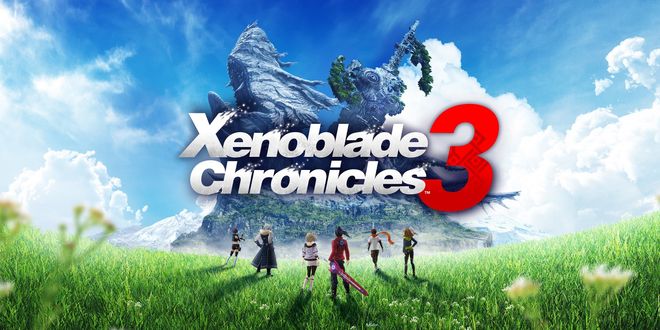
Wielders of the Monado, rejoice. Xenoblade Chronicles 3 is here, and worry not: it’s pretty darn great. We’ve been waiting half a decade for the continuation of Monolith Soft’s beloved JRPG saga, and the glowing reviews and strong sales figures flooding in left and right are a testament to the success of the title. However, absolutely nothing on this or any other Earth is perfect (believe me, I’ve popped into enough alternate realities to be sure on that), and the same holds true for Noah and company’s adventure. In this listicle, I’ll be breaking down five ways that Xenoblade Chronicles 3 stands tall over its predecessors, and five that it probably should have taken a page out of those games’ Collectopaedias for.
Battles unchained
- The combat system is fantastic. Monolith have, quite cleverly, taken the best parts of the battling from the first two games and smooshed them together into a rather impressive whole. Cancelling Arts into fluid, Krabble-decimating chains is as fun as it’s ever been, and the new Ouroboros transformations – while undeniably overpowered – feel amazing to pull out in a pinch. A key complaint about 2 was the sluggishness of the basic combos, and that’s been all but put to rest, especially given the inclusion of Fusion Arts (which let you deploy two moves at once). Someone on the dev team was taking notes after Future Connected, and it’s much appreciated.
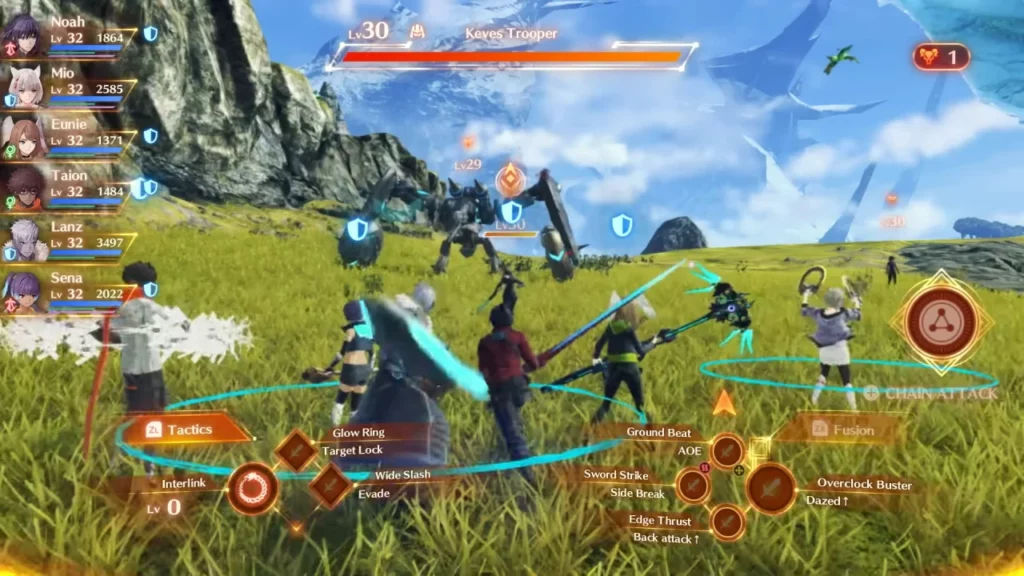
- The chain attack system is odd. While I certainly appreciate the removal of the time limit for picking each character’s moves during chain attacks – which historically did nothing but cause me to make idiotic choices and screw up combos – I feel they went a bit too far in the opposite direction here. You now have all the incessant time in the world to ponder over what move each character will perform, and it’s not always clear what’s causing all the Tactical Points to add up in the way they do. The result? Chain attacks often drag on long past the point where the damage sponge enemies have been KO’d, and though you can cancel them at any stage, you’re encouraged to keep them going for bonus EXP. Plus, activating a chain attack stops the fantastic battle music dead in its tracks. That’s a crime in itself.
Random Blades are better than no Blades
- Xenoblade 2’s annoying gacha system has hit the curb. Continuing the theme of addressing common sticking points from 2, the contentious Blade rolling mechanic has been axed wholesale. Though I must confess upfront I never had too much trouble with this (being a sycophant, I bought the DLC which effectively guarantees you a good supply of rare core crystals), I sympathise with the anguish felt by many fans who never unlocked the best Blades under the watchful, heartless eye of RNJesus. Want KOS-MOS? Well, tough luck, matey. Better get grinding. Here, all it takes to unlock the different classes for each character is… uh, more grinding, but at least it isn’t randomised! You’ll also unlock Heroes, 3’s answer to the Blades of old, as a matter of course rather than out of the loot crate of the week.
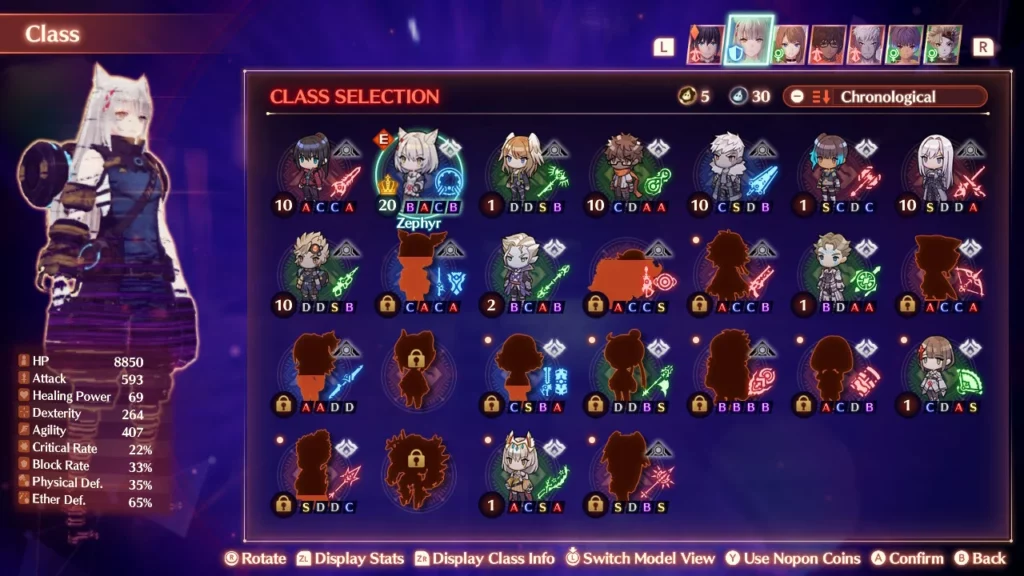
- Classes aren’t as interesting as Blades. On the other side of the coin, however, the replacement of Blades with character classes and Heroes does a fair bit of damage to the charm of the world. Popping a new Blade was a magical moment because they weren’t just a glorified weapon pack; they were actual characters, with quirky personalities and little side stories to pursue. A personal highlight for me was Sheba, a drill-haired, spoilt rich girl riding around in a bath. As you do. In Xenoblade 3, the Heroes strike me as generic, and classes are functionally identical regardless of who you equip them on, making them a downgrade in my book – not even the aesthetic changes they bring to the core six cast members can sway me.
Off the edge of the map
- The world traversal is spectacular. This is perhaps one of my biggest pluses with Xenoblade Chronicles 3. Where do you even start with the improvements here? I’ll try. Unnecessary Blade skill checks preventing you from going anywhere without faffing around in the menu? Gone. Artificially inflated fall damage used to wall you off from areas you wanted to explore? Gone. Inability to battle enemies in the water? Gone. Inability to collect items, pause the game, or perform any action whatsoever other than fighting when an enemy spots you? Gone, gone and gone. Everything is just so much smoother and more respectful of your time. By God, you can even leap while swimming onto nearby ledges – which may not seem like much, but for this series, trust me: it is. Top marks, Monolith.
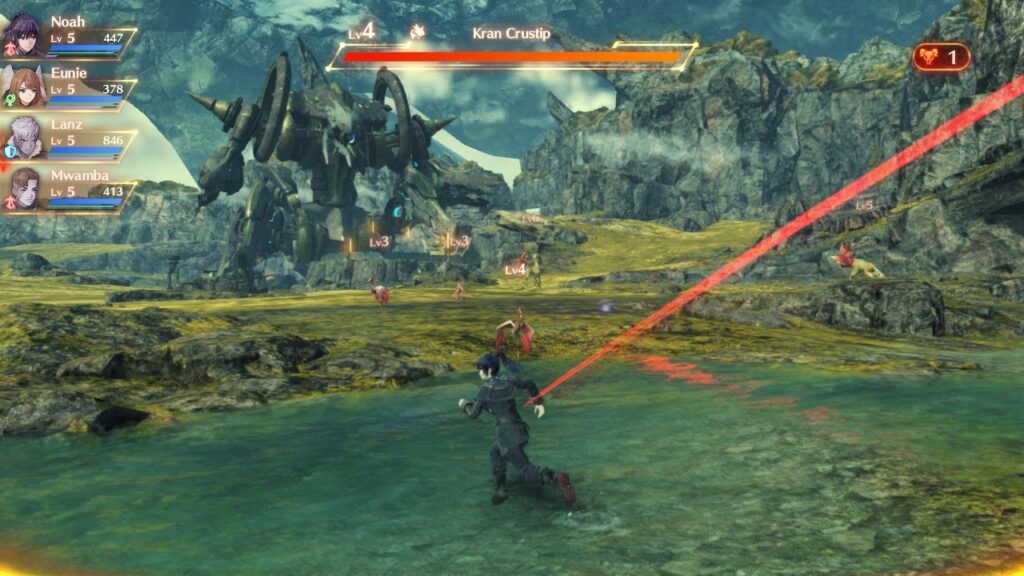
- But oddities with the map and UI remain. There are more than a few technical quirks with the presentation of Xenoblade Chronicles 3’s interface. You’ll be pressganged into required tutorial after required tutorial, which are needlessly restrictive in how they teach you the functionality of the various menus, buzzing loudly in your face if you even dare to try and poke around for yourself. Several upgrade trees are tucked away in bizarre places; I remember being stunned when I stumbled upon the affinity perks list after several hours. There’s a ‘mark all as seen’ option for items, but not for Arts and tips, which you’ll be unlocking far more frequently. The ‘Auto Build’ option doesn’t appear to extend to Ouroboros forms, which would actually benefit far more from it. Locations that aren’t landmarks are not marked on the map, making it difficult to keep track of what you’ve visited. I could go on, but I won’t. You get the idea.
Storytelling with character
- The series’ themes and continuity are maintained. Without giving too much away, the events of Xenoblade Chronicles 3 are explicitly tied to the futures of the realms we explore in 1 and 2. Fans will be aware that there is a singular, rather grounded, thread that ties all these disparate games together, and it’s once again brought to the forefront in the final hours of the threequel. Likewise, one can easily see echoes of the past in the backdrop of the game: we once again have two warring nations, a la Bionis VS Mechonis and Uraya VS Mor Ardain, and a ragtag group of youths who experience a religiously allegorical parable about friendship and the abuse of power. You’ve also got glowing swords and foul-mouthed Cockney cyborg enemies in the mix. Some traditions die hard; and anyway, as George Lucas once said, it’s like poetry. It rhymes.
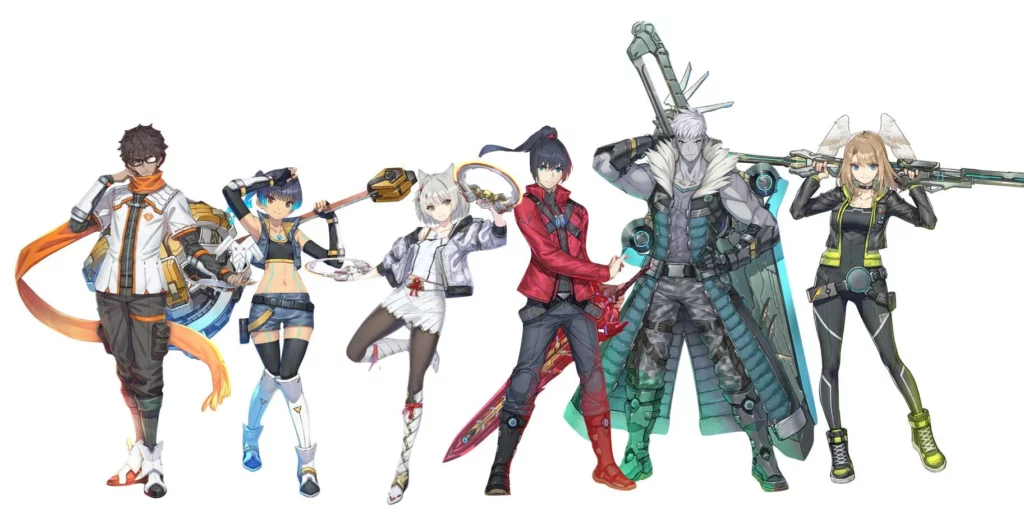
- There are a few too many reheated characters and arcs. On the flipside, though, this very same familiarity that permeates the adventure often threatens to venture into repetition and ‘been there, done that’ territory. Aside from the aforementioned wartime setting, this is best exemplified in the core sextet, who are all archetypes whose personalities and arcs are blatantly lifted from previous protagonists. Noah is a slightly more morose Shulk, while Lanz is an obvious Reyn redo, only somehow even more of a meathead. Eunie is like Melia if she spent a few months on the streets of Bradford, and Mio and Sena feel like Nia and Brighid’s off-brand cousins. They didn’t even try with the Nopon Riku, for whom they took Xenoblade 1’s Riki, changed a vowel, dropped his balls and gave him an afro. Yes, I’m aware there is narrative significance to these similarities – but all the same it makes the (largely likeable) new cast feel like imitations of prior greats as opposed to individuals in their own right.
Taking it to the next level (and beyond)
- The overall UI is much tidier. It’s depressing in hindsight that the often-cluttered presentation actually represents an improvement (!!!) over that which we saw in Xenoblade Chronicles 2. Though I eventually memorised my way around it some 100 hours in, it was, to put it bluntly, a mess. Menus within menus within menus formed a serpentine, twisting labyrinth of options and toggles that bogged down what was, at its core, a fairly simple class system. Wanted to change your Blade’s core chips? Good luck finding that option amid the sea of numbers and distracting anime art. And don’t get me going on the Poppi screen. This extended to the battle UI, which was infamous on the internet for its crowded, retina-searing awfulness. Despite its own hiccups, Xenoblade 3 drastically cuts down on all this bloated nonsense, allowing changes to a class or accessory to be done in a handful of presses, rather than fifty. Baby steps, eh?
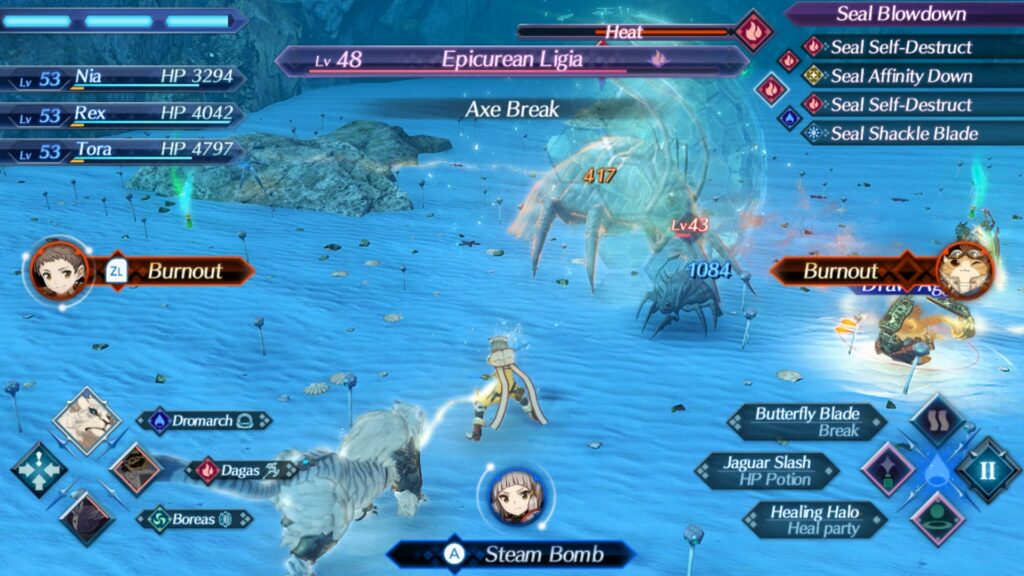
- Overlevelling is a rampant problem. Now we come to the final drawback of Xenoblade Chronicles 3, and it’s one so pervasive and potentially run-damaging that it may be a deal-breaker for some players. I honestly cannot fathom why this design choice was made, but: you can’t level down. As in, removing EXP and storing it for later so as to customise difficulty. Can’t be done. At all. Levelling down was a core feature of previous Xenoblade games, as it counteracted the gratuitous heaps of EXP you had poured upon you from doing sidequests, thus allowing you to enjoy the side content while ensuring the main story would still provide a challenge. Here? Well, if you don’t fancy steamrolling every single mainline boss in the game, you’d best ignore those damn side missions, because there’s absolutely nothing you can do. This is especially egregious as class points (required to rank up in a particular battle style) are awarded in smaller quantities the higher your level goes, making late-game class upgrades a tedious grind. One can only hope Monolith will address this in a patch, because at present, it’s a fundamental flaw.
Closing thoughts
That concludes our little dive into the stuff Xenoblade 3 got oh-so right, and the areas where it perhaps could have done with a little bit more tinkering. For every yin, there’s a yang, and for every Rhadallis, there’s an Amalthus waiting in the wings to brutally poison them. Deep cut reference there.
Of course, either way I still heartily recommend picking up the game and enjoying a generous helping of RPG goodness – but do you agree? What’s your take on my analysis? Let us know!

